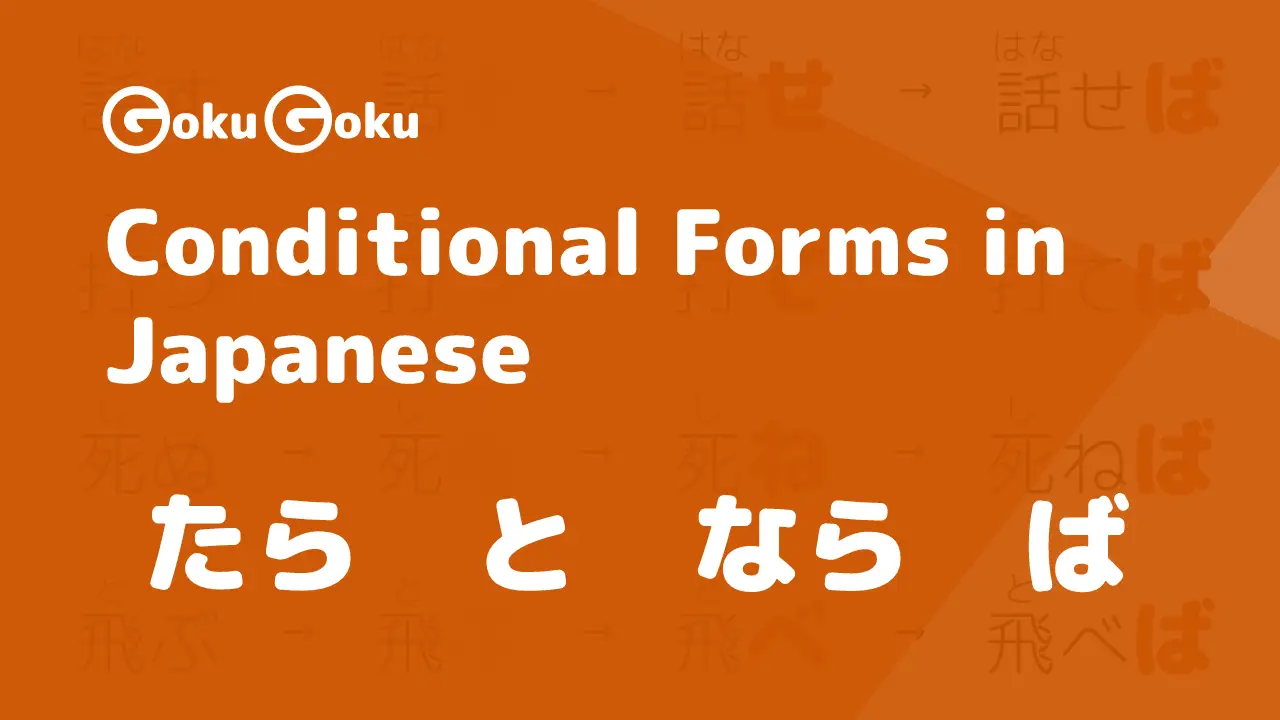Today we are studying together a verbal form that will be very useful in daily conversation and in oral and written comprehension in Japanese: the Causative or Causative Form.
This form is conjugated using the suffix させる or せる, depending on whether the verb is Ichidan or Godan.
使役 shieki is the term used to define this verb form
The causative form of the verb or causative
This form is used when the subject causes another person to perform an action.
Sometimes you induced, you forced the person to perform that action and other times you allowed the person to perform that given action.
使役形 the
form(形) causative (使役)使役の動詞
verbs(動詞) in causative form
How is the causative form formed?
Now let's see how the causative is formed for the various categories of verbs:
- Ichidan, with a single base, omit the final syllable る and add the suffix させる, and for the negative させない
- Godan, with five distinct bases, using the B1 or negative base ending in "a", combined with the suffix せる and for the negative せない
The causative form of する (
to do) is させるThe causative form of 来る (
to come) is 来させる
Some examples of verbs
書く
write; 書かせる読む
read; 読ませる泳ぐ
swim; 泳がせる
Exceptions for verbs ending in う preceded by a vowel; form the negative base by adding わ (wa):
言う ⇨ 言わ causative 言わせる
会う ⇨ 会わ causative 会わせる
手伝う ⇨ 手伝わ causative 手伝わせる
Causative form and obligations
The first use of the causative form refers to actions that one is forced, induced to do often against one's will.
母は娘に玩具を片付けさせる。
The mother makes her daughter tidy up her daughter's toys.
The indicative word in these cases is 強制 constriction, forcing, obligation
I didn't want or intend to do that thing, but...
言われたからしました。
I did it because I was asked.
母は娘を塾に行かせた。
Mom sent her daughter to remedial class.
Literally she made her daughter go to class; the daughter probably didn't feel like going to class that day, but she she had to.
もっと野菜を食べさせろ。
Eat more vegetables!
In the sentence reported, in addition to the causative form, we also find the imperative one.
ずっと練習させれば、うまくなる。
If you practice them continuously, they will improve.
Here we have found the causative and conditional form of する.
The causative form also has the function of 指示 indications, instructions
風が入ってきて寒いので、友達に窓を閉めさせた。
It was cold from the wind, so I made my friend close the window.
キャプテンがメンバーを集まらせた。
The coach gathered the party members.
Let's stay on this last sentence and add another element:
監督がキャプテンにメンバーを集めさせた。
The coach asked the captain to gather the members.
In this sentence we have all the elements with the various particles:
the subject expressed with が
the person who is asked to do or asked to do something: expressed with に
the thing requested expressed with the particle を
Causative form and Japanese interpersonal relationships
In the causative form we find, as we have seen in the context of Keigo, the relationships between superior and inferior, the hierarchical relationships: 上下関係.
The causative form is generally used by a person considered superior at a hierarchical level towards another person of a lower degree.
先生は生徒にレポートを読ませます。
The teacher asks the student to read the report.
Literally: The teacher makes the student read the report.
In this case the teacher asks the student to read and the student reads, according to a request and a response considered normal.
One of the translations of the causative form is rendered as asking someone to do something.
Other examples:
部長は山田さんを会議に出席させた。
The director asked Mr. Yamada to attend the meeting.
先生は学生に漢字を50回ずつ書かせた。
The teacher made the students write each kanji 50 times.
Causative form and permissions
The subject allows the person to do something, allows the person to perform a given action.
父は息子を遊びに行かせた。
Dad let his son go to play.
The terms that summarize these cases are 許可, permission, authorization and 放任 non-intervention, neutrality
There are no constraints in these examples; you let the person do something for which the person himself has often requested or expressed his desire.
Obviously we can also use the negative form:
母は息子をプールへ行かせなかった。
Mom didn't let her son go to the pool.
Causative form and emotions
Another particular use of the causative form can be in situations in which emotions and feelings are expressed that arise in relationships with other people:
誘発 or 感情の原因 represent theemotional causes
子供は母の日に、CDをプレゼントして、お母さんを喜ばせました。
The children made their mother happy by giving her a CD for Mother's Day.
子犬は家族みんなを楽しませている。
The puppy entertains the whole family.
Returning to the personal relationships between Japanese, the cases of use of the causative that fall under the obligations or permissions, concern people in a superior position (parents, teachers, owners) towards a person in a lower position.
In cases where emotions and feelings are expressed, there is no distinction and every person can use this form regardless of role and position.
困らせてごめんなさい。
Sorry to bother you.
Transitive and intransitive verbs in the causative form
Intransitive verbs become transitive in the causative form and they acquire the particle indicating the object を.
- 笑う
to laughintransitive verb
子供が笑っている。
The boy laughs.
子供を笑わせた。
I made the boy laugh.
Causative form and Keigo
We have seen in the post dedicated to Keigo, the honorific language, the use of the causative form, in particular the form in te combined with the verbs 頂く and もらう which mean receive.
自転車を使わせて頂けますか。
May I use your bike?
What I express in this sentence is will you allow me to use? or are you kind enough to let me use?.
今日の英語のクラスをキャンセルさせてもらいました。
I canceled today's English class.
I took the liberty of deleting or I deleted with your permission.
The translation in these cases often reports the fact as it appears: I canceled in class.
In reality we want to communicate something that goes beyond the words expressed: we apologize in some way for the inconvenience and at the same time we thank you for your cooperation.
In this post we have seen the various representative uses of the causative form.
The advice is to practice starting from single verbs. You can take various everyday verbs and transform them into the causative form. And if you listen to Japanese films or anime in their original language, write down these forms and then review them again in your studies.







